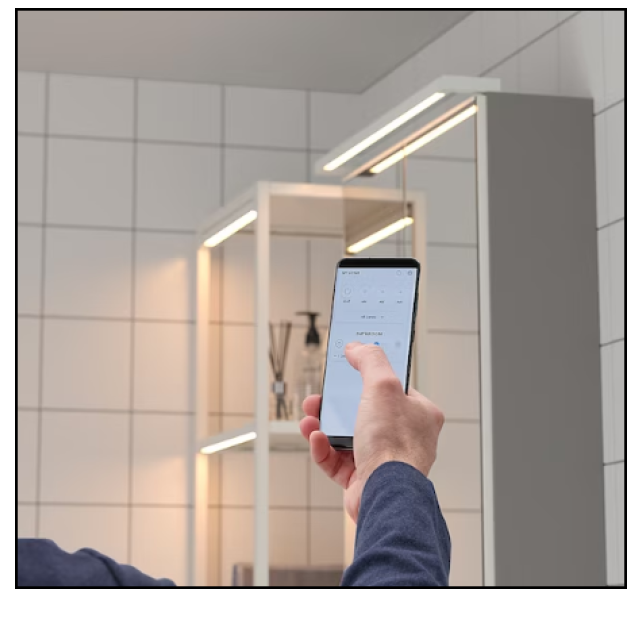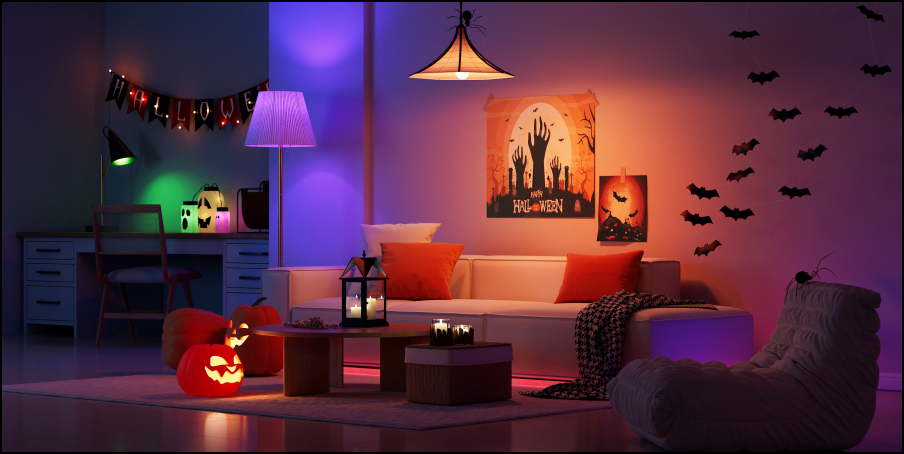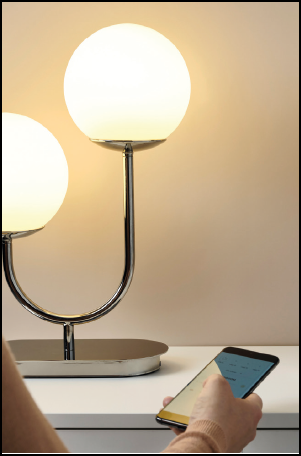
If you buy smart lamps, you obviously want them to remain smart for a longer period of time. We explain what you should pay attention to when purchasing smart lighting.
Jeffrey van de Velde and Rob Coenraads

The range of smart lamps has grown rapidly in recent years. While Philips Hue (Signify) had little competition in the smart lamp market in the early years, that monopoly has been broken by WiFi lamps and smart (local) lamps from other brands. WiFi lamps in particular have caused a revolution in recent years. Now, WiFi lamps not only pose risks in terms of security and privacy, but the future sustainability of these lamps is sometimes also uncertain. No matter how smart they are: if a manufacturer suddenly pulls the plug on its servers, your WiFi lamps are just as stupid as regular lamps. Before purchasing a smart lamp, it is smart to pay attention to the connection technology and (lifetime) guarantees of the manufacturer.
Local control vs. servers
There are actually two types of smart lamps available at the moment: lamps that you control locally and lamps where every action takes place via a off-site server expires. In other words: every time you perform an action, it is first processed via a manufacturer’s server, which sends the action back to your lamp.
You can always connect these two categories with their own network technology. Local lamps always use Bluetooth, Matter, Zigbee or Z-Wave to perform actions. You can read more about this in the article Standard smart home. Lamps that connect to external servers (Wi-Fi lamps) can be controlled via… WiFi.
Advantages and disadvantages of local operation
So you have two types of connections, each with their own advantages and disadvantages. With local smart lamps, the main advantage is that you are not tied to a manufacturer’s server. This way you will not be bothered if a manufacturer ceases to exist or the servers go offline due to a defect or other circumstances. So you only have to rely on your local WiFi network.
Ultimately, you simply control the lamps via WiFi. In that respect you do compromise with the local lamps: you have a so-called bridge necessary to operate smart, local lamps. Your smartphone does not have Matter, Zigbee or Z-Wave. A system with local lamps is therefore slightly more expensive. In addition, the lamps themselves are also somewhat more expensive: after all, manufacturers have to pay for the use of Zigbee and Z-Wave technologies.
Pros and cons of WiFi
The cost is often the biggest advantage of WiFi lamps. After all, you don’t have a loose one bridge necessary. In addition, WiFi lights are sometimes easier to set up and you can operate them from anywhere. This advantage also applies to almost all local lamps; with the exception of copies with Bluetooth. As nice as that advantage is, it won’t be of much use if your lamp manufacturer’s servers go offline. That dependence is therefore the most important disadvantage. Moreover, we cannot ignore the fact that WiFi lamps have an impact on your privacy. Because yes: manufacturers can always see when you use your lamps and collect that data. They are also aware of where you live and the lamps are connected to your WiFi network. Although the majority of brands will handle your data with care, there are often brands of which we wonder whether they comply with all privacy rules. After all, what can you expect from the privacy policy of smart lamps that cost less than 10 euros? The Chinese Tuya is a manufacturer with such a shady policy. In Belgium and the Netherlands, Tuya lamps are available at stores such as Hema and Action. Please note: the Tuya brand name becomes not named. At Action it is about the LSC collection. So what should you pay attention to with WiFi lamps? First, check the manufacturer’s track record and check how long your product line will be supported. In addition, we recommend only purchasing WiFi lamps from brands you trust (for example TP-Link, WiZ (Signify), Innr (Signify) and LIFX).
 |
|
The new smart Philips Festiva lighting can also be used outdoors |
Matter support
It was earlier Matter already mentioned, which you can read more about in the aforementioned article Standard smart home. It is a new, overarching smart home standard that allows devices with Bluetooth, Wi-Fi, Zigbee, Z-Wave and Thread support to work together. With the new standard, hardware partners also want to put an end to the bridge for local smart equipment. The disadvantage is: at the time of writing, the standard is still being worked on. When purchasing smart lamps, we would not necessarily advise including the inclusion of Matter as a standard as a ‘hard requirement’. Does the lamp support the protocol, or will this follow via a software update? That is of course a bonus. Finally, an important point of advice: always ensure that smart lamps work together in one room. Nothing is more annoying than lamps that differ greatly in brightness, that cannot be controlled at the same time, or lamps that you cannot set in one scene – for example an evening scene with a specific brightness and color. Do you think those functions are important? Then you preferably choose lamps from one brand per room; It will save you some apps on your phone anyway.
 Philips Hue
Philips Hue
Although we normally highlight specific products, the Hue range is simply too large for that. Whichever Hue lamp you buy, they always work locally, via Bluetooth or Zigbee. Signify has also built one of the best apps for smart lights over the years. Do you have a specific scene in mind? Then there is a good chance that you will find it in the scene tool of the Hue app. Automate lighting? That is also very simple; This allows you to switch the lights off and on at a desired time in the evening and in the morning. This not only saves energy: the lamps can also help you wake up more naturally. Finally, it is ideal that you can also operate the lamps manually via the Hue switches, which connect wirelessly to your bridge. A disadvantage of Philips Hue? The price tag.
Characteristics:
* Zigbee or Bluetooth connection
* bridge required with Zigbee
* available in shades of white and multicolor
* wireless switches available
(Zigbee/Bluetooth)

TP Link Tapo
Just like with Hue, we are not going to highlight specific products for TP-Link, here too there are simply too many. In addition, the manufacturer regularly offers new lamps. TP-Link lamps can be found in the Tapo series, just like other WiFi-connected smart home products. You can also connect these smart lamps via WiFi. Although we prefer not to recommend WiFi lamps, at TP-Link we are not concerned about the support period for Tapo lamps: even lamps from 2018 still work in the Tapo app. Functionally, the lamps are not even inferior to their Hue counterparts. Here too you can set a scene for a specific moment and also serve as wake up light. So feel free to set the lights to gently wake you up at 6 am. An additional advantage of the fact that they work via your WiFi network is that you do not have to purchase a separate hub. Tapo lamps are also quite affordable – you can often find them for less than 20 euros.
Characteristics:
* wifi connection
* bridge not required
* available in shades of white and multicolor
IKEA lighting
We’re going offline again, with smart lighting from IKEA. Various Tradfri lamps use Zigbee, in combination with the Dirigera or Tradfri hub. IKEA even offers the option to only control your lamps locally. It is also possible to operate the smart lights outdoors. You can change this option in the IKEA Home Smart app. Functionally, IKEA’s Home Smart ecosystem can be compared to both HUE and TP-Link, so you can easily set scenes. Home Smart also offers support for Alexa and Google Home, so you can control the lights with voice control. What you should pay attention to with IKEA lighting is what type of lighting they offer. Lamps from Hue and TP-Link are often multicolor. However, at the time of writing, this is not the case at IKEA. These lamps then only show different shades of white. With price tags starting at 8 euros, they are also the cheapest lamps. Add a Dirigera hub for the smarts part.
Characteristics:
* Zigbee connection
* bridge required
* available in shades of white and multicolor
* wireless switches available
(Zigbee)